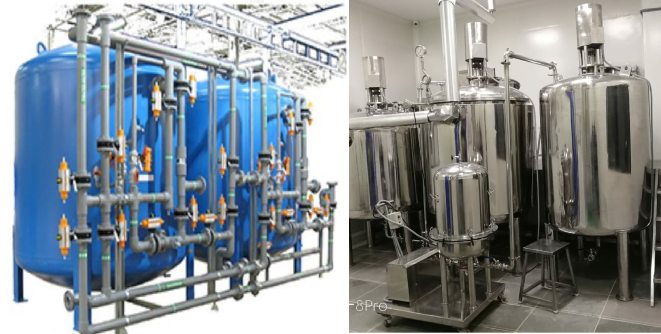Your myriad sinks are drained into the drainage or discharge system, which receives the ZERO LIQUID DISCHARGE SYSTEM created through the food and beverage preparation region. The first component of the discharge program is on the sink itself: the trap. It is really a curved section of pipe, where the lowest part of the pipe “traps” (or retains) some drinking water.
The trap is known as a P trap when the drain pipes go into the wall; it is known as an S trap when the drain pipes go into the ground. In addition to these traps, it’s a great idea to have floor drains located directly beneath your larger sinks. The drains inside a commercial kitchen area should have a dome strainer (or sediment bucket), much like a perforated sink stopper that traps bits of dirt and food as liquids go down the drain.
For the heaviest-duty jobs, a ground drain having a a lot larger strainer compartment (called a sump) is suggested. The sump is at least eight inches square. Kind 304 stainless steel is the preferred material for drain fabrication, and coved corners make them easier to clean. Drains ought to not be flush using the ground, but recessed slightly (about 1/16 of an inch) to prompt water to flow toward them.
The drain pipe should be three to 4 inches in diameter, and its interior walls must be coated with acrylic or porcelain enamel that’s both nonporous and acid resistant. A nonslip ground mat, with slats for drainage, ought to be a standard accessory beneath every sink.How many floor drains should you’ve in your kitchen? Let’s count the locations in which drains are a must to catch spills, overflow, and dirty drinking water from ground cleaning:
1. Hot line region
2. Prep and pantry region
3. By the pot sinks
4. Dishwashing area
5. Dry storage region
6. Outside the walk-in refrigerator
7. Wait stations/service locations
8. Near steam equipment
9. Through the bar sinks
10. Under the ice maker
The ice maker has an additional unique drainage requirement: a recessed floor. One smart concept is to install several drains, inside a trench that’s from a single to two feet wide and a number of feet long, covered having a rustproof metal grate. This is really efficient along the length of the hot line area or in the constantly wet dishroom.
When we talk about draining away waste materials, we’re not just discussing water. The water often contains grease, and grease disposal is an enormous (and messy) problem in foodservice. A grease interceptor is needed by law in most towns and cities. It’s commonly recognized as a grease trap, even though the professional plumbing industry discourages the use of this terminology.
Your area’s building code will list which kitchen fixtures must be plumbed to the interceptor; usually, the water/waste output of the garbage disposal, dishwasher, and all sinks and ground drains must pass via the interceptor prior to it enters the sewer. Employee restrooms and on-premise laundry appliances generally do not have to become connected to the interceptor.
The role from the grease interceptor would be to prevent grease from leaving the restaurant’s drainage program and clogging the city sewer system. Foodservice wastewater is really a large problem for sewers designed primarily for residential waste. Thus, fines and surcharges might be imposed on restaurants if their effluent (outflow) exceeds the local standards for its percentage of fats, oil and grease (FOG, in industry jargon).
As waste materials enters the interceptor, it separates into three layers: The heaviest particles of food and dirt sink towards the bottom; the middle layer is mostly water, with a little bit of suspended solids and grease in it; and the best layer is grease and oil. The interceptor “traps” the top and bottom layers whilst allowing the middle layer to flow away into the sewage system. Interceptors come in different sizes, and you ought to select a single based about the gallons of water that may run via it per minute, the number of appliances connected to it, and its capacity to retain grease.

